Dry: A Weekly Western Drought Digest — July 19, 2022
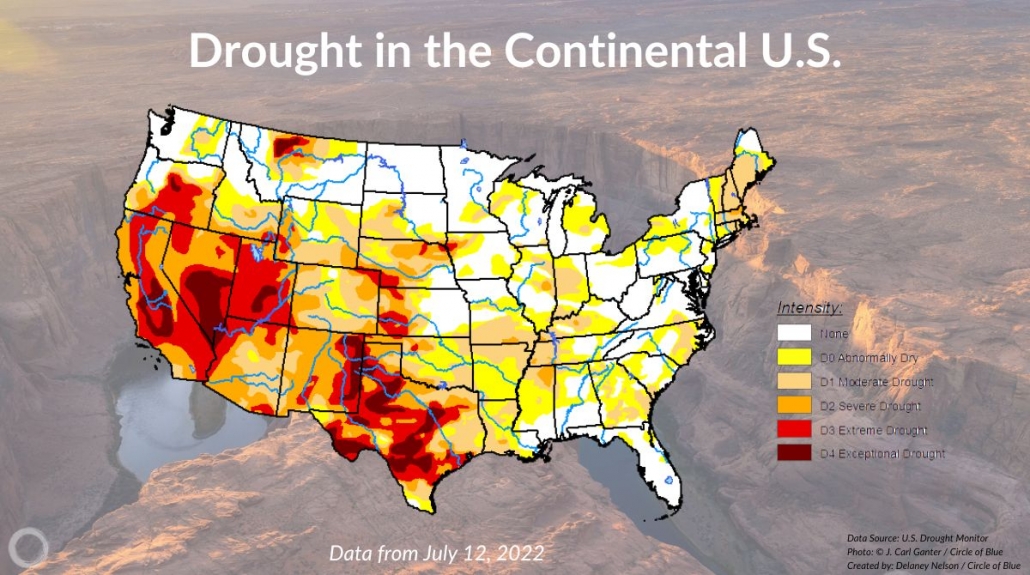
By Delaney Nelson, Circle of Blue – July 19, 2022
TOP NEWS
- As of July 12, nearly 45 percent of the U.S. and Puerto Rico is in drought, a 14 percent increase since mid-June.
- The federal Bureau of Reclamation gives Colorado River states a 60-day deadline to develop an emergency plan to conserve water.
- A heat wave in Texas is exacerbating the state’s drought conditions and forcing ranchers to sell their cattle.
- California has not made significant strides to reduce urban water use, and consequently, residents could face tighter government restrictions.
THE NUMBERS
- Fifty percent of the land area in the Lower 48 states is experiencing moderate drought or worse this week. Though that percentage is down slightly since early spring, this year is still the largest expanse of drought in the country since 2012-13. These conditions are affecting over 116 million people and the consequences have been severe: depleted water supplies and decreased crop and livestock production. According to the U.S. Drought Monitor, dry conditions are present across 218 million acres of cropland.
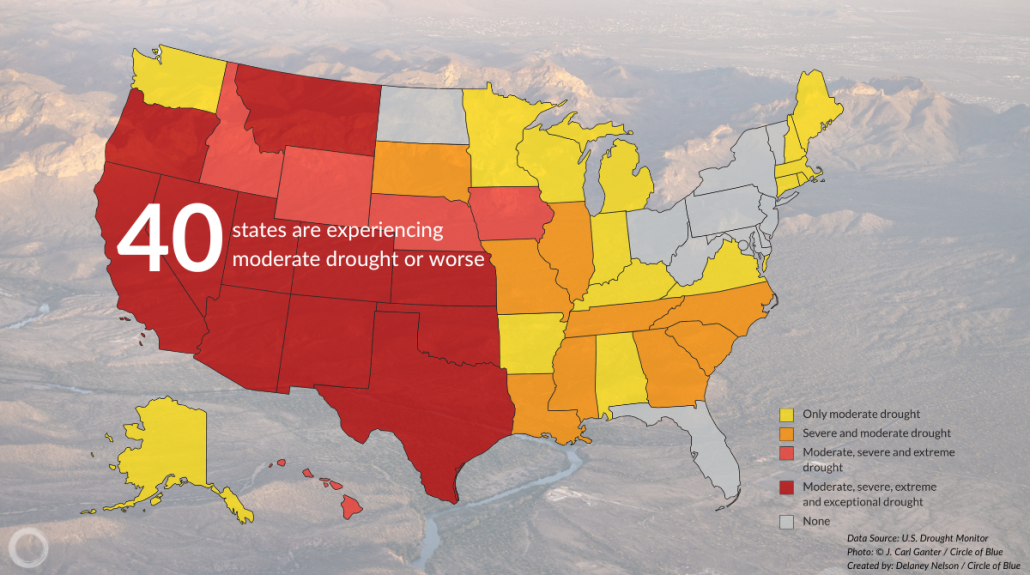
- Over 60 percent of counties experiencing moderate to exceptional drought also have economic or demographic attributes that increase their vulnerability. The Centers for Disease Control and Prevention calculates social vulnerability of every census tract based on income, household composition and disability, minority status and language, housing type, and transportation. These data determine a community’s risk level during public health emergencies.
- The Southwest is experiencing its most severe drought in over 1,200 years. Experts say aridification is a more accurate term to describe the drying climate, unlikely to return to previous wetter periods. As states grapple with another dry year, the National Integrated Drought Information System predicts drought impacts will continue to intensify and expand. The entire state of Nevada, along with nearly all of California, is experiencing some form of drought. Streamflows across Nevada and California are expected to be 75 percent of normal or less. Earlier this year, Arizona experienced its driest April-May on record, with no measurable precipitation anywhere in the state during May.
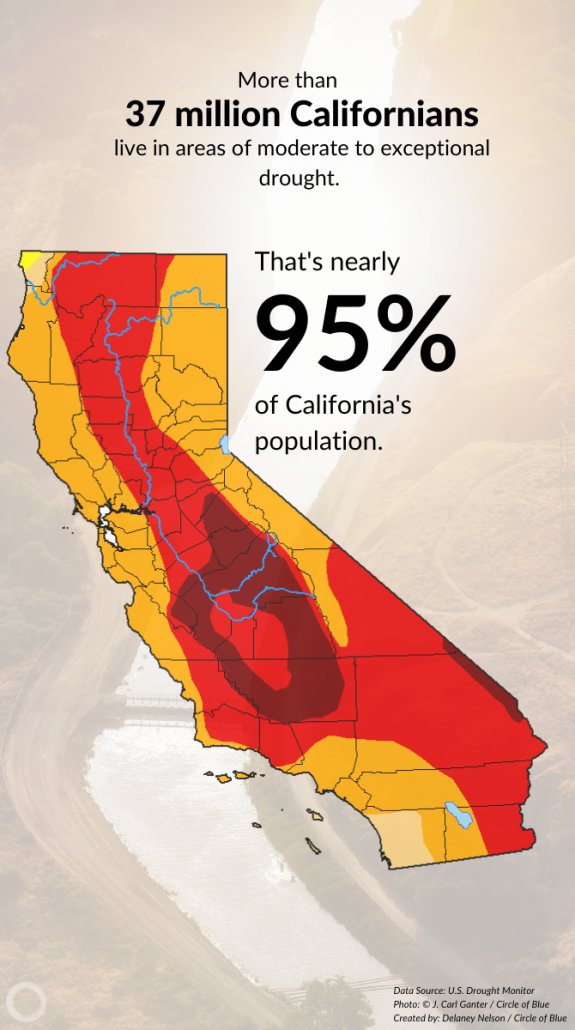
- At two-thirds of its original capacity, the Great Salt Lake reached a new low.
STATUS OF TOP RESERVOIRS/COLORADO RIVER
- The Colorado River reservoirs – upper and lower basin combined – are at a combined 35 percent capacity, six percentage points less than this time last year.
- Lake Mead has dropped 173 feet since 2000, the last time the reservoir was full. The nation’s largest reservoir is now just 27 percent of its capacity, prompting emergency plans to conserve water. Due to drier conditions, the surrounding rock walls have become stained by a “bathtub ring” watermark. Lower water levels have also led to the discovery of human remains, dead animals, and a World War Two-era vessel.

FEDERAL WATER SHORTAGE DECLARATION
Last August, the Department of the Interior issued a formal declaration of water shortage on the Colorado River, reducing the amount of water that Arizona and Nevada can withdraw. More cuts are coming.
The commissioner of the Bureau of Reclamation testified in a U.S. Senate hearing last month that the basin states have 60 days to create an emergency plan to conserve two million to four million acre-feet of water in the next year, or the agency will make the cuts itself.
TEXAS
Texas residents are experiencing a heat wave that has reached triple-digit temperatures, exacerbating the drought conditions that touch nearly every corner of the state. Earlier this month, Gov. Greg Abbott issued a drought disaster declaration. As of July 5, over 75 percent of the state is experiencing severe drought conditions or worse.
According to the U.S. Drought Monitor, 22 million Texans are affected by drought, including ranchers who are selling their cattle by the thousands due to shrinking supplies of grass and water. Earlier this month, the U.S. Department of Agriculture reported that 83 percent of pasture and range land is considered to be in poor to very poor condition.
CALIFORNIA
Last July, Gov. Gavin Newsom urged Californians to voluntarily reduce water use by 15 percent compared to 2020 levels. Residents did not heed his call. As of May 2022, the average statewide reduction was just 3.1 percent. In response, the State Water Resources Control Board banned the watering of “non-functional turf” in commercial, industrial, and institutional sectors. The board also required most cities and water districts to limit outdoor watering to two days a week.
WHAT’S AHEAD
The Southwest monsoon, a seasonal increase in precipitation from June 15 to September 30, has “started off strong,” according to the National Integrated Drought Information System. Forecasters anticipate a wetter-than-normal monsoon, which will alleviate dry conditions in the region, especially in Arizona and New Mexico, where horrific forest fires raged this spring. Despite the welcomed moisture, the seasonal rains are not expected to dampen the region’s long-term drying conditions.
Delaney Nelson is an intern for Circle of Blue covering drought in the American West. She writes Circle of Blue’s weekly roundup of drought in the American West. She’s a rising senior at Northwestern University studying journalism, political science, Spanish and environmental policy. In her free time, she likes to hang out with her dogs, play soccer and swim in Lake Michigan.

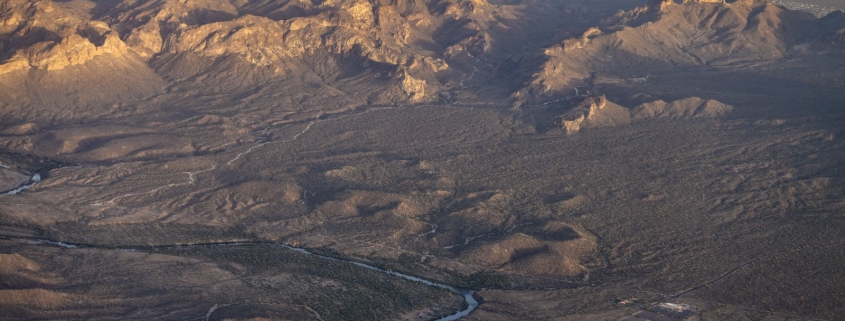 © J. Carl Ganter / Circle of Blue
© J. Carl Ganter / Circle of Blue
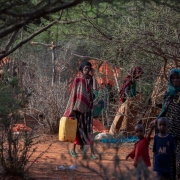



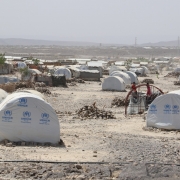




Leave a Reply
Want to join the discussion?Feel free to contribute!